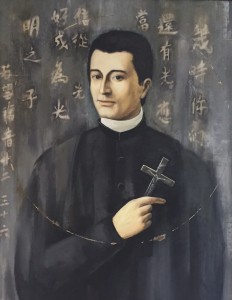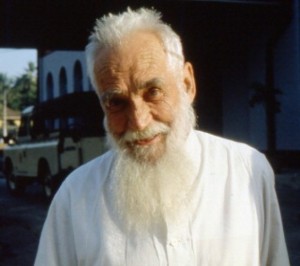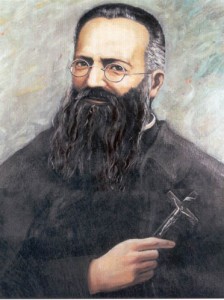St. Alberic Crescitelli (1863-1900)
Martyr in China
St. Alberic Crescitelli was born on June 30, 1863 in southern Italy. He entered the seminary at age 12. An excellent student, he earned bachelor’s degrees in philosophy, theology, and canon law and was ordained in 1887 for the Pontifical Seminary of Sts. Peter and Paul in Rome. The next year, he made the rigorous journey to his mission post in southern Shaanxi, China where he immersed himself in Chinese culture. To assimilate with the Chinese people, he adopted their style of dress and changed his name to “Kuo Si-Teh.” In 1900, after working in various missions, he was assigned to Ningqiang Province.
On July 20, 1900, in the village of Yanzibian (where there were many catechumens), his friends warned him of terrorists on a campaign to kill all foreigners and urged him to escape and hide. But a traitor among them entrapped him, causing his capture. He was viciously slashed and beaten, and the next morning he was dragged along the riverbank and beheaded as an example for all to see.
For his heroic faith, he was beatified by Pope Pius XII on February 18, 1951, and proclaimed a saint on October 1, 2000 by Bl. Pope John Paul II, along with many other Christians martyred during China’s Boxer Rebellion.
Blessed John Mazzuconi (1826 -1855)
Martyr in Papua New Guinea
“My dear friend, try constantly to love and like those who are our companions in our journey through life. To develop the habit of caring for others ennobles the heart and mind and makes us worthy children of that God Who is Charity.”
A member of the first expedition to Oceania in 1852, Mazzuconi was known for his intelligence and sensitivity. John had faith in the power of prayer over action, a faith that he practiced to a heroic degree. As a missionary on the remote South Pacific island of Rook, he suffered poverty and illness, and saw no real conversions. In human terms, it seems his missionary life was a failure. However, when he endured a martyr’s death, he brought forth the “first fruits” of the missionary work of PIME. Mazzuconi was beatified by Pope John Paul II on January 13, 1983.
Blessed Clement Vismara (1897-1988)
“I knew the Gospel. I loved it. I put it into practice. But I could not keep it in my heart only for myself.”
Blessed Fr. Clement Vismara carried out his work for 65 years in the Asian country now known as Myanmar. From 1923 to 1988 he served the people there, earning for himself the unofficial title of “Patriarch of Burma.” He returned to Italy only once, in 1957, because of illness. He died on June 15, 1988, in Mong Ping, in the Diocese of Kengtung, on the border with China and Laos. He was immediately invoked as “protector of children” because of his devotion to the orphaned children of his mission. He was beatified by Pope Benedict XVI on June 26, 2011.
Blessed Clement’s inspiring letters have been preserved in the book Clement Vismara: Apostle of the Little Ones. The children’s book The Man Who Never Grew Old is a colorful tribute to Bl. Clement.
Blessed Paolo Manna (1872-1952)
“The whole Church for the whole World!”
Blessed Fr. Paolo Manna was the first Superior General of PIME, although his heart remained in the missions of East Burma (now Myanmar) where he had served for 12 years. Pope John XXIII attributed to him the title of “the Christopher Columbus” of missionary cooperation and Pope Paul VI described him as “one of the most effective promoters of missionary universality in the 20th century.” He is also acknowledged for his “prophetic role” in promoting Ecumenism. Father Paolo Manna died in Naples on September 15, 1952.
His book Thoughts and Reflections upon Vocations to the Foreign Missions was published in 1909. An edited version entitled Forward with Christ was published by Fr. Nicholas Maestrini, PIME in 1954. Limited copies are available through the PIME Missionaries.
Blessed Mario Vergara (1910-1950)
Martyr in Burma.
An adventurous, fun-loving child who felt an early call to the missionary life, Fr. Mario Vergara entered the PIME seminary in Monza in 1929. After enduring a life-threatening illness his first year in seminary, he finally returned to his studies in 1933. He wass ordained in August of 1934 and left one month later for Burma. Known for his love for children and the sick, he was always on the move, undeterred by discomforts, bad weather, and attacks of malaria. When WWII broke out, and Italy declared war on England, all Italian missionaries were declared “fascists.” Vergara was sent with the other missionaries to a concentration camp in India. He was released in 1944, assigned to the mission of Toungoo. The British were no longer in control, but rebels sought to overthrow the government. Vergara was killed by the rebels, along with a catechist, on May 24, 1950.





